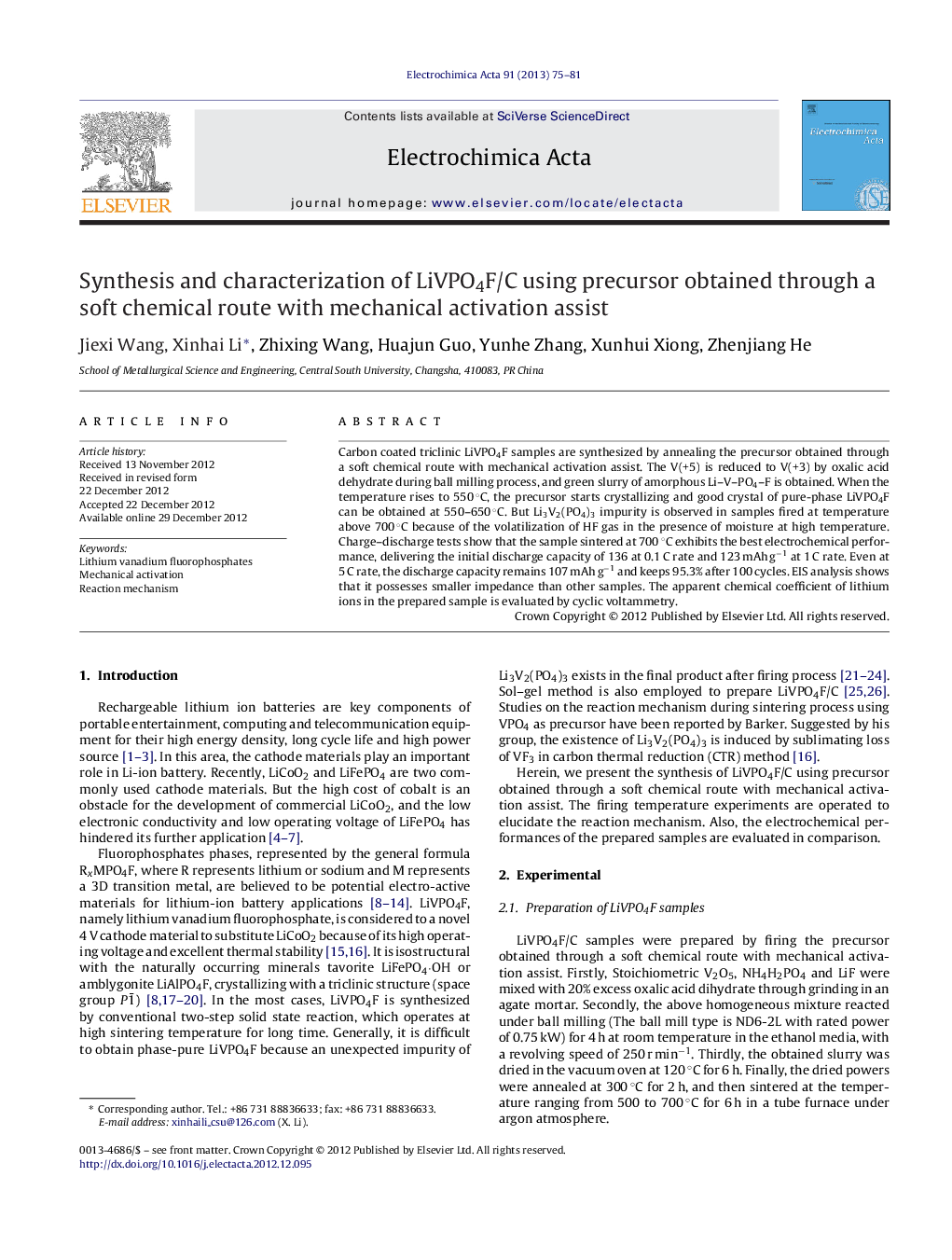| Article ID | Journal | Published Year | Pages | File Type |
|---|---|---|---|---|
| 186976 | Electrochimica Acta | 2013 | 7 Pages |
Carbon coated triclinic LiVPO4F samples are synthesized by annealing the precursor obtained through a soft chemical route with mechanical activation assist. The V(+5) is reduced to V(+3) by oxalic acid dehydrate during ball milling process, and green slurry of amorphous Li–V–PO4–F is obtained. When the temperature rises to 550 °C, the precursor starts crystallizing and good crystal of pure-phase LiVPO4F can be obtained at 550–650 °C. But Li3V2(PO4)3 impurity is observed in samples fired at temperature above 700 °C because of the volatilization of HF gas in the presence of moisture at high temperature. Charge–discharge tests show that the sample sintered at 700 °C exhibits the best electrochemical performance, delivering the initial discharge capacity of 136 at 0.1 C rate and 123 mAh g−1 at 1 C rate. Even at 5 C rate, the discharge capacity remains 107 mAh g−1 and keeps 95.3% after 100 cycles. EIS analysis shows that it possesses smaller impedance than other samples. The apparent chemical coefficient of lithium ions in the prepared sample is evaluated by cyclic voltammetry.
► Simple synthesis of LiVPO4F/C. ► Suggesting the probability to obtain pure-phase LiVPO4F/C in this route. ► Reaction mechanism during firing process is raised to be volatilization of HF in the existence of moisture. ► The Li+ diffusion coefficient in the LVPF cathode is evaluated through CV for the first time.
